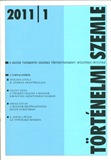Pozsony város költségvetése a 16. század második negyedében. A városi számadáskönyvek elemzési lehetõségeirõl
The Budget of the Town of Pozsony
in the Second Quarter of the 16th Century. About the Possibilities of the Analysis of the Town Account Books
Author(s): Attila Tózsa-RigóSubject(s): History
Published by: Magyar Tudományos Akadémia Bölcsészettudományi Kutatóközpont Történettudományi Intézet
Summary/Abstract: The information contained in the account books of the various towns can be analysed from several viewpoints. An obvious advantage of this type of source is that it generally offers a continuous and rich flow of information. Several town account books have come down to us from the period indicated in the title. The present study aims to contribute to the elaboration of a conceptual framework to be used by a long-term research. The aim of this research project is to subject to a comparative analysis all the town account books which have survived from the early modern period both in the Kingdom of Hungary and in the neighbouring regions. The present study examines the budget of Pozsony (today Bratislava, Slovakia) in the second quarter of the 16th century. The prime goal of such an analysis, based upon the town account books, is to find out to what extent the economic capacities of the contemporary townspeople of Pozsony were able to meet the demands which emerged in the period under consideration. It will hopefully give us a broad view of the internal functioning of the town as an independent economic unit, and reveal important information on the basis of which the fluctuation of prices and salaries can be reconstructed. The study does not intend to be an exhaustive analysis covering the whole period. Such an approach seems more profitable when the similar accounts of other towns can be put to use as well. The present paper, thus, limits itself to the comparison of the data coming from the budgetary years of 1528/29 and 1540/41. These two sets of data from two sample years are suitable for offering a glimpse of how radical political changes in the country reflected themselves in the budget of a given town. They enable us to examine the consequences these changes involved for the townspeople, and the question of the extent to which, and the means by which, the town leadership was able to meet the challenges coming from the wider world. The sums spent on the defense of the town grew rapidly from the 1520s on. Moreover, the general state of warfare in the country involved military burdens which did not contribute directly to the defensive capacities of the town itself. The bulk of these new expenses was consumed by the equipment of troops. Another major item was represented by the transports furnished for the army. Yet the proportion of money set apart for the defense of the town and other military purposes also grew substantially. All this was of course the consequence of a radically new political situation. The remaining expenditures, which had been common in the previous periods as well, can be divided into five major blocks: 1. material expenses; 2. the salary of town officials and employees; 3. maintenance of town properties and repaying of debts mortgaged upon them; 4. payments for various manual works; 5. other. Town incomes are analysed from the point of view of what kinds of sources were at the disposal of t
Journal: Történelmi Szemle
- Issue Year: 2011
- Issue No: 01
- Page Range: 39-62
- Page Count: 24
- Language: Hungarian

